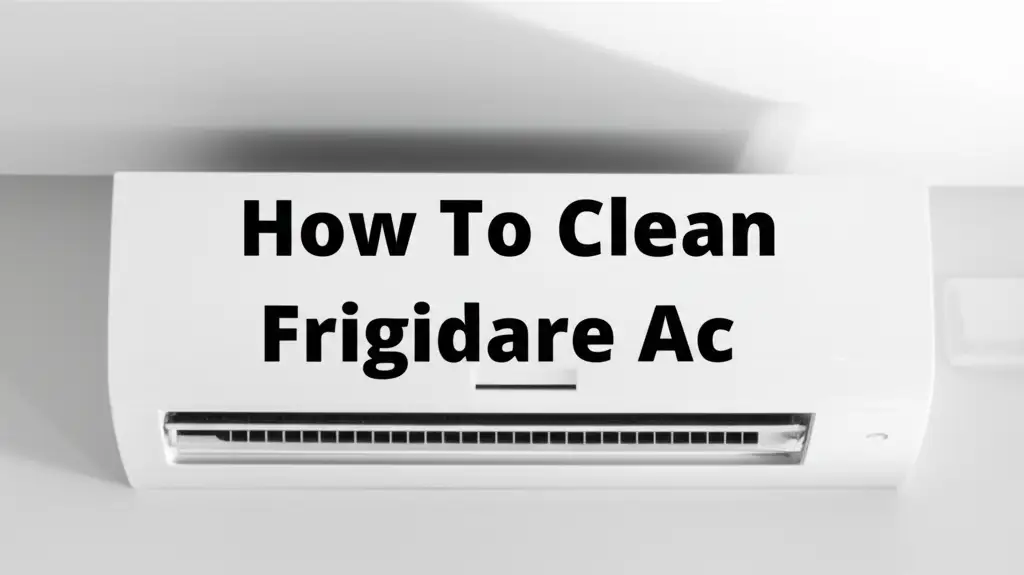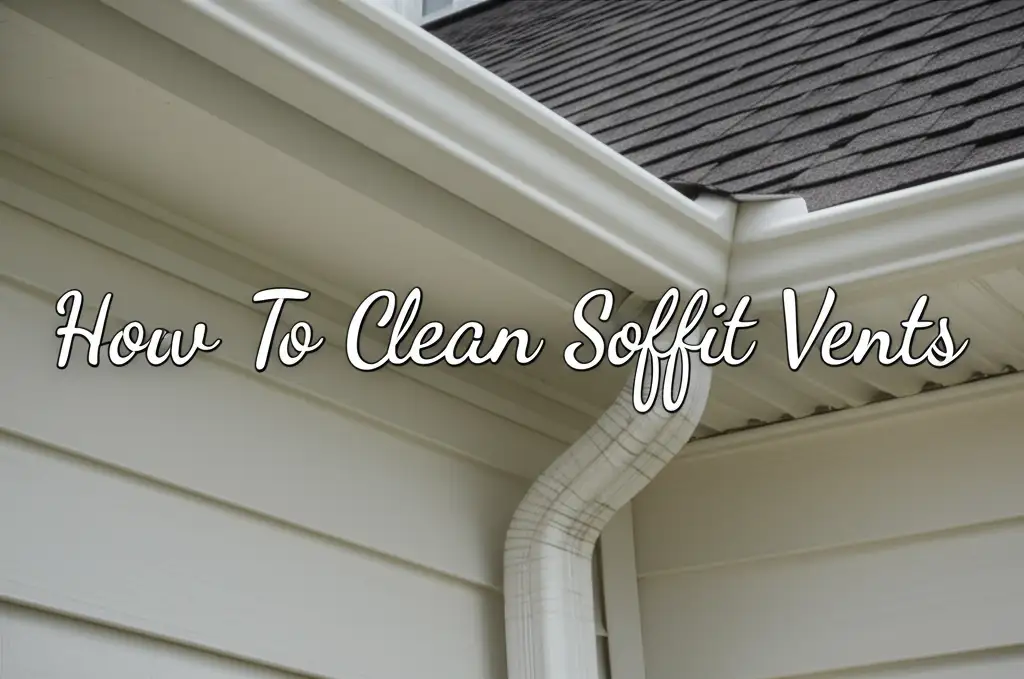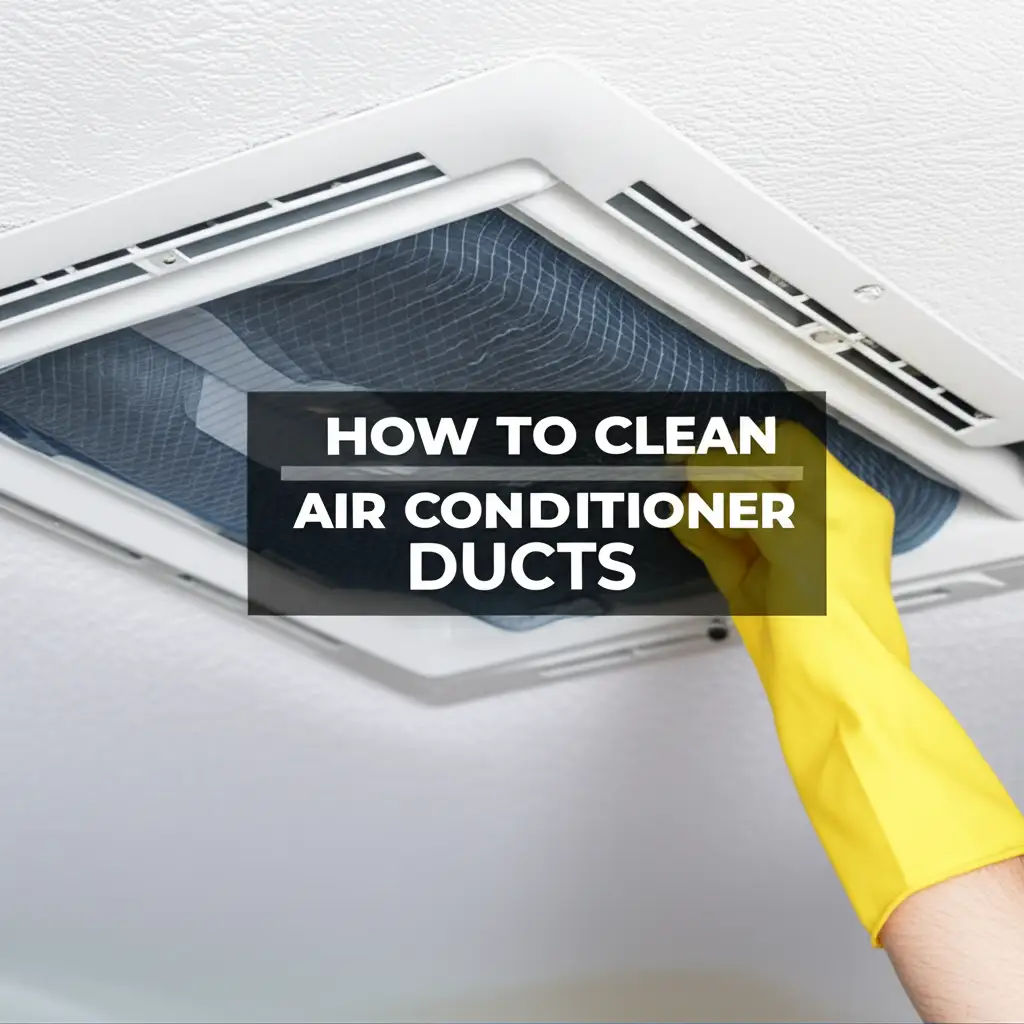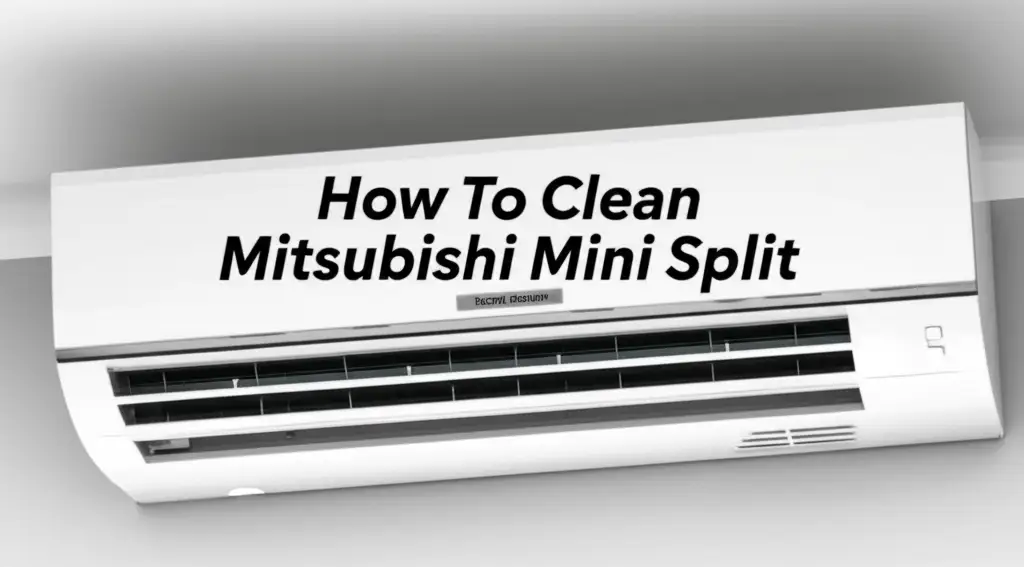· Home Maintenance · 20 min read
How To Clean Sump Pump
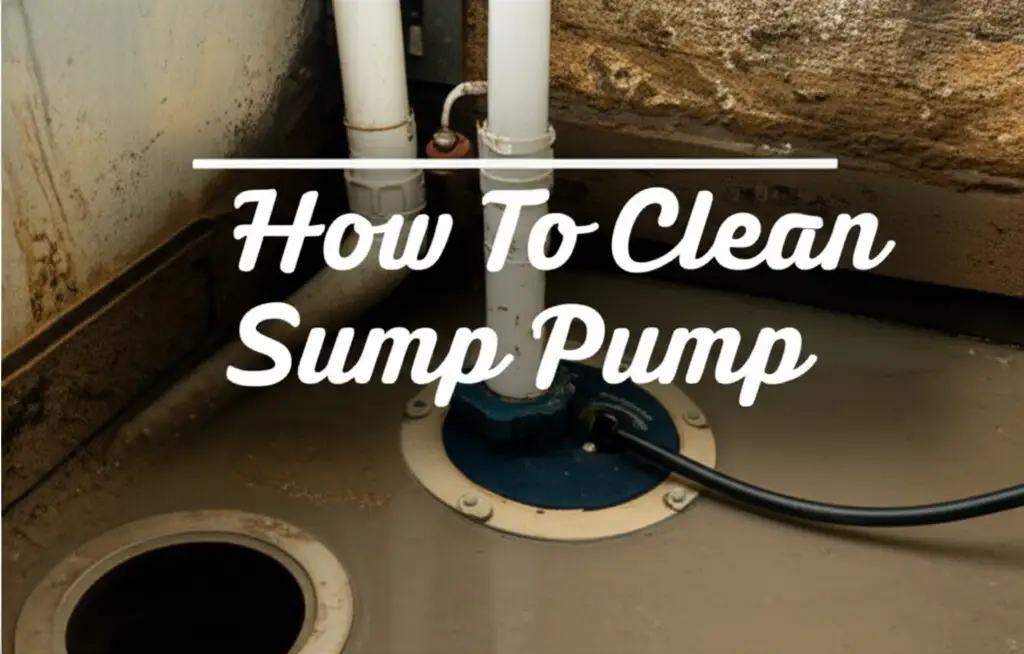
Keep Your Home Dry: How To Clean Your Sump Pump
A sump pump is your home’s unsung hero against basement flooding. It quietly waits, ready to spring into action when water levels rise. However, like any hardworking appliance, it needs proper care. Knowing how to clean your sump pump ensures it performs its vital job effectively.
Neglecting your sump pump can lead to costly water damage. Debris, sediment, and even small objects can clog the pump or its float switch. This prevents the pump from activating when needed. Regular cleaning keeps your basement dry and protects your foundation. This article will guide you through the process of cleaning your sump pump. We will cover necessary tools, safety precautions, and step-by-step instructions. You will also learn valuable tips for ongoing maintenance.
Takeaway:
- Regularly clean your sump pump to prevent basement flooding.
- Disconnect power before starting any cleaning or maintenance.
- Thoroughly clean the pump, basin, float switch, and check valve.
- Test your sump pump after cleaning to confirm proper operation.
- Schedule annual professional inspections for peace of mind.
To clean a sump pump, first, disconnect its power source for safety. Then, remove the pump from its basin and manually clear any debris from the impeller and intake screen. Finally, clean the sump pit itself before reassembling and testing the unit. This process ensures effective operation and prevents flooding.
Understanding Your Sump Pump: Why Cleaning Matters
Your sump pump stands guard in your basement, ready to protect your home. It collects excess groundwater that seeps into your property. When the water level in the sump pit rises, the pump activates. It then pushes water away from your foundation through a discharge pipe. This system prevents basements from flooding during heavy rains or snowmelts.
This pump works hard, often in dirty, damp conditions. Over time, mud, silt, gravel, and other debris can build up in the sump pit. This debris can enter the pump itself. When this happens, the pump’s efficiency drops significantly. A clogged pump may fail to activate, leaving your basement vulnerable to water damage. Regular cleaning is not just good practice; it is essential for flood prevention.
The Sump Pump’s Role in Flood Prevention
Imagine a heavy storm hitting your area. Water quickly saturates the ground around your home. Without a working sump pump, this water would find its way into your basement. This leads to costly damage to your belongings, walls, and flooring. A functioning sump pump redirects water safely away from your home. It protects your property from water intrusion.
The sump pump acts as the last line of defense for your basement. It ensures your home remains dry and safe. Its role is crucial, especially in areas with high water tables or frequent heavy rainfall. Keeping it clean ensures it can always perform its critical function. I have seen many homes saved from disaster because of a well-maintained sump pump system.
Common Signs Your Sump Pump Needs Cleaning
Your sump pump will often show signs it needs attention. You might hear strange noises coming from the unit. These sounds can indicate that debris is interfering with the impeller. Another sign is if the pump runs continuously, even when there is no significant water. This suggests a problem with the float switch or a clogged intake.
You might also notice a foul odor emanating from the sump pit. This smell can be from stagnant water or mold growth due to blockages. If your basement has standing water, your sump pump has likely failed. This failure often results from a lack of maintenance, including cleaning. Pay attention to these warnings to avoid a major problem.
Gathering Your Tools: Essential Supplies for Sump Pump Cleaning
Before you begin the cleaning process, gather all necessary tools and supplies. Having everything ready saves time and ensures a smooth operation. You will need certain items for personal protection. You will also need specific tools for cleaning the pump and the pit. Prepare your workspace before you start.
This preparation step is crucial for both safety and efficiency. Working with dirty water and electrical components requires care. Ensure you have proper lighting and ventilation in your basement. A clear workspace prevents accidents. I always lay out a tarp or old towels to contain any spills.
Safety First: Personal Protective Equipment
Working with a sump pump involves contact with water and electricity. Safety must be your top priority. Always wear appropriate personal protective equipment (PPE). This protects you from potential hazards. Your safety gear includes items like rubber gloves and safety glasses.
- Heavy-Duty Rubber Gloves: These protect your hands from dirty water, bacteria, and any sharp debris. They also provide a layer of insulation against potential electrical shocks.
- Safety Glasses or Goggles: Splashing water or flying debris can injure your eyes. Eye protection is non-negotiable.
- Waterproof Boots: You will be stepping into standing water. Waterproof boots keep your feet dry and safe.
- Work Clothes: Wear old clothes you do not mind getting dirty. You may encounter mud, grime, and other unpleasant substances.
Cleaning Tools and Solutions
You will need a variety of tools to effectively clean your sump pump and its basin. Some of these tools are common household items. Others are more specific to pump maintenance. Make sure they are all in good working order before you begin.
- Large Bucket or Container: You will need this to hold the pump once you remove it. It also helps collect any remaining water in the pit.
- Wet/Dry Vacuum (Shop Vac): This tool is invaluable for removing water and debris from the sump pit. It works much better than trying to bail water manually.
- Stiff-Bristled Brush: A sturdy brush helps scrub away grime from the pump and the basin walls. You might want an old toothbrush for smaller areas.
- Old Towels or Rags: Use these for wiping down surfaces and cleaning small components.
- Garden Hose or Utility Sink with Sprayer: This is for rinsing off the pump components.
- Mild Detergent or Bleach Solution: A small amount of mild detergent can help cut through grime. A diluted bleach solution (1 part bleach to 10 parts water) can sanitize the pit if mold or strong odors are present. Be careful with bleach, ensure good ventilation, and do not mix it with other cleaners.
- Pliers or Adjustable Wrench: You might need these to disconnect pipes or hoses.
- Flashlight or Headlamp: The sump pit area can be dark. A good light source helps you see clearly.
Safety First: Disconnecting Power and Preparing the Area
Before you touch anything connected to your sump pump, you must prioritize safety. This means disconnecting the pump from its power source. Electrical shock is a severe risk if you bypass this step. Do not rush this part of the process. Your safety depends on it.
Once the power is off, you can prepare the immediate work area. This involves clearing any items around the sump pit. A clean space allows you to move freely and safely. It also prevents accidental damage to your belongings. I always double-check the power before I even think about touching the pump.
Power Disconnection: The Critical First Step
Locate the circuit breaker panel in your home. Find the breaker labeled for your sump pump. It might be in your basement or utility room. Flip the breaker to the “OFF” position. This cuts the power supply to the sump pump. Do not rely solely on unplugging the pump, especially if it is hardwired.
After flipping the breaker, verify that the pump is indeed off. You can try to plug in a small appliance, like a phone charger, into the sump pump’s outlet if it uses one. If there is no power, you have successfully disconnected it. For hardwired pumps, a non-contact voltage tester can confirm the absence of power at the wiring. This step is non-negotiable for your safety.
Clearing the Work Area
Your sump pump pit is often in a utility corner or storage area. Before you start working, clear away anything around the pit. Move boxes, tools, or furniture. This gives you ample space to maneuver the pump and your tools. It also prevents tripping hazards.
Lay down old towels or a plastic tarp around the sump pit. This protects your basement floor from dirty water or spilled debris. Sump pump maintenance can be messy. Preparing your work area makes cleanup much easier. Ensure good lighting in the area. A portable work light or a headlamp can make a big difference.
Draining and Removing the Sump Pump: Step-by-Step Guide
With safety measures in place, you are ready to remove the sump pump. This part involves handling water and the pump itself. Be prepared for some residual water in the pit. You will also need to disconnect the pump from its discharge pipe. This process should be done carefully to avoid damage.
I always keep a bucket nearby during this stage. It helps manage any water that drains as I disconnect the pump. Take your time, especially if you are new to this task. Rushing can lead to mistakes or spills. Remember, the goal is a clean pump and a dry basement.
Draining the Sump Basin
Even if your sump pump is not currently running, there might be water in the basin. You need to remove this water before you can lift the pump out. A wet/dry vacuum is the best tool for this job. It quickly sucks up water and small debris. You could also use a smaller bucket to bail out most of the water manually.
Once most of the water is gone, use the shop vac to get the remaining sludge and small puddles. You want the pit to be as dry as possible. This makes it easier and cleaner to remove the pump. It also gives you a better view of the basin’s condition.
Disconnecting and Lifting the Pump
Your sump pump is connected to a discharge pipe. This pipe directs water outside your home. Locate the check valve on this pipe, usually just above the pump. This valve prevents water from flowing back into the pit. Most check valves are secured with clamps that you can loosen with a screwdriver or pliers.
- Disconnect the Discharge Pipe: Loosen the clamps on the check valve. Gently separate the discharge pipe from the pump. Be aware that some water might spill out. Have your bucket ready.
- Unplug or Disconnect Power Cords: If your pump has a separate float switch cord, unplug both cords from the outlet. If it’s hardwired, confirm the breaker is off again.
- Lift the Pump Out: Carefully lift the sump pump out of the pit. It can be heavy due to its motor and any water inside. Place it in your large bucket or on your protected work surface. This prevents any remaining dirty water from dripping onto your floor. Sometimes, the pump can be quite heavy, especially if it’s a submersible model. Be careful and lift with your legs, not your back. This process is similar to handling other submersible pumps, like when you clean a dishwasher pump or even considering the heavy nature of industrial units like a fuel pump.
Thorough Cleaning: Tackling the Pump and Basin Components
Now that the sump pump is out of its pit, you can begin the detailed cleaning process. This involves focusing on the pump itself, especially its impeller and intake screen. You will also need to clean the float switch and the check valve. Finally, give the sump pit a thorough scrubbing. This part requires a bit of elbow grease.
Remember to inspect each component for wear or damage as you clean it. Catching issues early can prevent future pump failures. I often find small stones or sediment stuck in places I did not expect. A diligent cleaning helps remove all potential obstructions.
Cleaning the Sump Pump Impeller and Housing
The impeller is the part of the pump that spins and moves water. It is typically located at the bottom of the pump, covered by an intake screen. This screen prevents large debris from entering the pump. However, small particles can still get through and clog the impeller.
- Remove the Intake Screen: Most sump pumps have a removable base or screen. Unbolt or unclip it according to your pump’s manual.
- Clear Debris from Impeller: Use a stiff brush or even a small screwdriver to carefully remove any visible debris from the impeller blades. Mud, hair, string, and small pebbles are common culprits. Be gentle to avoid bending the blades.
- Rinse the Housing: Use your garden hose or utility sink sprayer to thoroughly rinse the entire pump housing. Pay close attention to the intake area and any crevices where sediment might hide. Ensure all dirt and slime are washed away. This is a critical step, much like when you need to clean an above-ground pool pump impeller to maintain its efficiency.
Addressing the Float Switch and Check Valve
The float switch is essential for automatic pump operation. It floats on the water surface and activates the pump when water reaches a certain level. If it gets stuck or clogged, your pump will not turn on. The check valve prevents water from flowing back into the pit after the pump shuts off.
- Clean the Float Switch: Inspect the float switch for any buildup of grime, grease, or debris. Use your brush and soapy water to clean it thoroughly. Ensure it moves freely without any resistance. A sticky float switch is a common cause of pump failure. You want it to move smoothly up and down.
- Inspect and Clean the Check Valve: The check valve usually contains a flapper or ball that opens and closes. Check inside for any debris that might prevent it from sealing properly. You might need to disassemble it if it is particularly dirty, but check your pump’s manual first. Ensure the flapper moves freely and seals tightly when closed. This prevents water from cycling back into the pit, making the pump work harder than needed. Some people find cleaning the check valve similar to maintaining a condensate pump in an HVAC system.
Deep Cleaning the Sump Pit or Basin
The sump pit itself accumulates a lot of muck over time. This includes silt, mud, gravel, and organic matter. A dirty pit can re-contaminate your newly cleaned pump. It can also generate unpleasant odors.
- Remove Remaining Debris: Use your wet/dry vacuum to suck up all the remaining water, mud, and solid debris from the bottom of the pit. Get into the corners and sides.
- Scrub the Basin Walls: Use your stiff-bristled brush and a mild detergent solution to scrub the inside walls of the sump pit. Pay attention to any slimy buildup. For stubborn grime or mold, a diluted bleach solution (1 part bleach to 10 parts water) can be used. Pour it in, scrub, and then vacuum it out completely. Ensure good ventilation if using bleach.
- Rinse Thoroughly: After scrubbing, rinse the pit thoroughly with clean water from your garden hose. Vacuum up the rinse water. Repeat until the pit is visibly clean and free of residue.
- Check for Inflow Pipes: Ensure the drain tiles or other pipes entering the pit are clear. Remove any debris blocking their openings.
Reassembly and Testing: Ensuring Proper Functionality
Once your sump pump and basin are sparkling clean, it is time to put everything back together. Reassembly must be done carefully to ensure all connections are secure. After reassembling, you need to test the pump. This confirms it is working correctly before a real emergency arises. Do not skip this testing phase.
Proper reassembly prevents leaks and ensures the pump operates as designed. Testing gives you peace of mind. It also allows you to catch any issues before they become major problems. I always take a few minutes to verify every connection.
Reinstalling the Sump Pump and Connections
Carefully lower the cleaned sump pump back into the pit. Position it so the discharge pipe aligns with the existing plumbing. Ensure the pump sits level on the bottom of the pit.
- Connect the Discharge Pipe: Reconnect the discharge pipe to the pump’s outlet. Secure the check valve clamps tightly. Ensure there are no gaps that could lead to leaks.
- Check Electrical Cords: If you have separate cords for the pump and the float switch, make sure they are not tangled. Ensure they can move freely without obstruction.
- Re-route Cords (if necessary): Make sure the power cords are routed safely away from any moving parts. They should not interfere with the float switch’s movement.
Testing the Sump Pump’s Operation
This is the moment of truth. You need to simulate a flood situation to see if your pump activates. This simple test confirms your hard work paid off.
- Restore Power: Go back to your circuit breaker panel. Flip the sump pump’s breaker back to the “ON” position.
- Add Water to the Pit: You can use several buckets of water or a garden hose to fill the sump pit. Pour water into the pit until the float switch activates.
- Observe Pump Activation: Watch to see if the pump turns on immediately once the water reaches the float switch’s activation level.
- Check Water Discharge: Observe the water being discharged through the discharge pipe outside your home. Ensure it flows freely and quickly.
- Monitor Shut-off: After the water level drops, the float switch should lower, and the pump should turn off. Confirm it shuts off completely.
- Repeat Test (Optional): You can repeat the test a few times to ensure consistent operation. Listen for any unusual noises during operation. This confirms your pump is ready for action.
Maintaining Your Sump Pump: Tips for Long-Term Performance
Cleaning your sump pump is a vital part of its maintenance. However, ongoing care is also crucial for long-term performance. Regular checks and preventive measures can extend your pump’s lifespan. They also reduce the likelihood of unexpected failures. Think of it as a small investment that protects your large investment: your home.
Establishing a routine maintenance schedule is highly recommended. This ensures your pump remains in top condition. I always advise homeowners to make these checks a part of their seasonal chores. Prevention is always better than reaction when it comes to basement flooding.
Regular Inspection Schedule
Routine inspections can catch small issues before they become major problems. I recommend checking your sump pump quarterly, or at least every three to four months. During periods of heavy rain, more frequent checks are a good idea.
- Visual Inspection: Look inside the sump pit. Check for any large debris that might have fallen in. Ensure the float switch is free of obstructions. Make sure the discharge pipe is not blocked.
- Test the Pump Manually: Pour a bucket of water into the pit to simulate rising water levels. Observe if the pump activates and discharges water properly. Ensure it shuts off once the water level drops. This simple test confirms the float switch and pump motor are working.
- Check the Check Valve: Ensure the check valve is not leaking back into the pit after the pump runs. A slow drip back can indicate a faulty valve, making the pump work harder.
- Listen for Unusual Noises: While the pump is running, listen for grinding, rattling, or high-pitched noises. These sounds can indicate a problem with the motor or impeller.
- Inspect the Discharge Pipe: Ensure the end of the discharge pipe outside your home is clear. Debris, ice, or vegetation can block it. Make sure water flows freely away from your foundation.
- Examine the Backup System: If you have a battery backup sump pump, test it regularly according to the manufacturer’s instructions. Ensure the battery is charged and operational. Power outages can be sudden, and a reliable backup is critical.
Preventing Future Clogs and Issues
Proactive steps can significantly reduce the frequency of major sump pump cleanings. Small habits can make a big difference in preventing debris buildup. Protecting the pump from falling objects is key.
- Cover the Sump Pit: A sturdy lid or cover for your sump pit is a simple yet effective preventative measure. This prevents debris, toys, or even small animals from falling into the pit. Ensure the cover allows for easy access when maintenance is needed.
- Keep the Area Clear: Do not store items directly around or over the sump pit. This prevents accidental dropping of objects into the pit. It also ensures easy access for inspections and maintenance.
- Avoid Pouring Liquids Down the Pit: Do not use the sump pit as a drain for household chemicals, paint, or other liquids. These can damage the pump or create hazardous fumes.
- Address Foundation Issues: If you notice excessive water entering your sump pit, it might indicate broader drainage issues around your home. Consider inspecting your gutters and downspouts. Ensure they direct water away from your foundation. Improving exterior drainage reduces the burden on your sump pump.
- Professional Servicing: Consider having a plumbing professional inspect your sump pump annually. They can identify potential issues you might miss. They also perform more extensive maintenance. This includes checking electrical connections and the pump’s overall health. A professional can ensure your system is robust.
FAQ Section
How often should I clean my sump pump?
You should aim to clean your sump pump once or twice a year, depending on its usage and the amount of sediment in your area. If you live in an area with high water tables or experience frequent heavy rains, cleaning it more often, perhaps quarterly, is a good idea. Regular inspection every few months is also recommended.
What are the signs of a failing sump pump?
Signs include unusual noises (grinding, rattling), the pump running constantly without water, failure to activate during a test, visible corrosion, or your basement flooding. If the pump is not discharging water, or if water is slowly flowing back into the pit, these are also indicators of a problem.
Can I clean a sump pump by myself?
Yes, you can clean a sump pump yourself with basic tools and careful attention to safety. The process involves disconnecting power, removing the pump, cleaning its components, scrubbing the pit, and reassembling. However, if you are unsure or uncomfortable, especially with electrical components, hiring a professional is a safer choice.
What if my sump pump float switch is stuck?
If your sump pump float switch is stuck, the pump will either run continuously or fail to activate. First, disconnect power. Then, clear any debris around the float switch. Ensure it moves freely. If it remains stuck or damaged, you may need to replace the float switch or the entire pump.
How do I prevent odors from my sump pit?
Odors from the sump pit often indicate stagnant water, mold, or debris buildup. Regular cleaning of the pit and pump helps prevent this. Ensure the discharge pipe allows water to drain completely. A diluted bleach solution can sanitize the pit during cleaning if odors persist, but ensure good ventilation.
What causes a sump pump to run continuously?
A sump pump running continuously often indicates a stuck float switch that never drops to the “off” position. It can also mean a faulty check valve allowing water to flow back into the pit. In some cases, a high water table or plumbing leak can cause constant water inflow, making the pump work non-stop.
Conclusion
Keeping your sump pump clean is an essential part of home maintenance. It directly protects your basement from the damaging effects of water. A clean pump means a reliable pump, ready to tackle any amount of incoming water. You have learned the crucial steps for how to clean sump pump effectively. This includes safety precautions, gathering the right tools, and detailed cleaning of each component.
Regular cleaning and routine checks prolong your sump pump’s life. They also ensure it works when you need it most. Do not wait for a flood to discover your sump pump has failed due to neglect. Make sump pump maintenance a priority. Your dry basement and peace of mind are well worth the effort. By following these guidelines, you empower yourself to keep your home safe and dry, season after season.
- sump pump maintenance
- basement waterproofing
- home plumbing
- flood prevention
- DIY cleaning
- drainage systems

